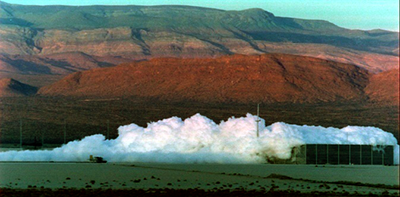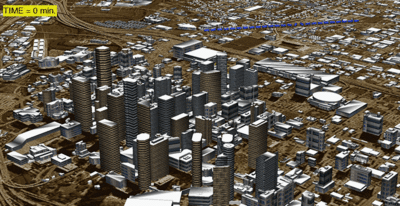Large quantities of potentially harmful chemicals are stored and transported across the country each day. Many of these chemicals behave as dense gases due to their heavier-than-air densities or storage at cold temperatures or under high pressure. Dense gases disperse differently than lighter materials, exhibiting behavior such as down-slope flow (possibly in a direction different than the prevailing wind), pooling in low-lying areas, and slow vertical mixing that tends to trap material near the ground increasing the likelihood of human health and environmental impacts.
In the 1980s, LLNL played a lead role in the study of releases of liquefied natural gas. Field experiments were conducted at the Nevada Spill Test facility and the SLAB model was developed to model the dispersion of denser-than-air gases based on these studies. SLAB is still being used today to predict the impact of toxic chemical releases, although it and similar empirical models do not account for terrain or the presence of structures.
Recently, LLNL has developed an advanced computational fluid dynamics (CFD) model, Aeolus, that simulates the interactions of the dense gas with buildings and complex terrain. Aeolus predictions have been validated using experimental data from the Thorney Island Experiment. (Gowardhan, 2012)
DHS’s National Urban Security Laboratory sponsored the development of a new operational model, Aeolus, to simulate the dispersion and deposition of material released from an RDD in urban area, including building effects.






